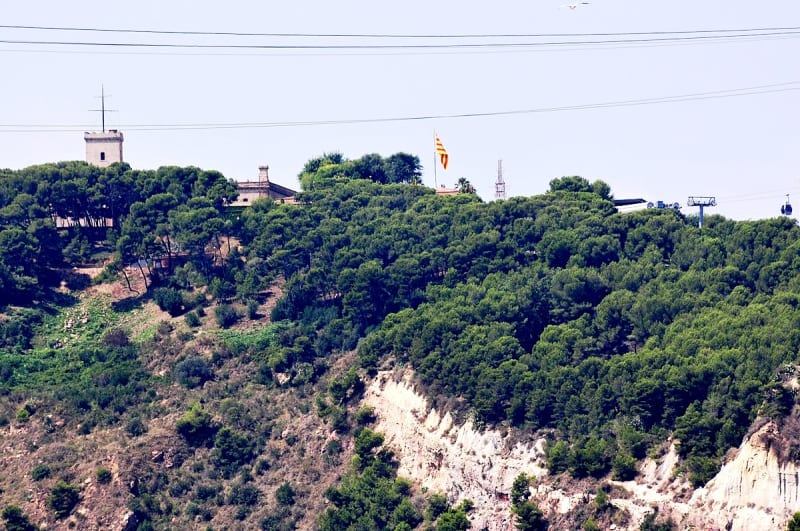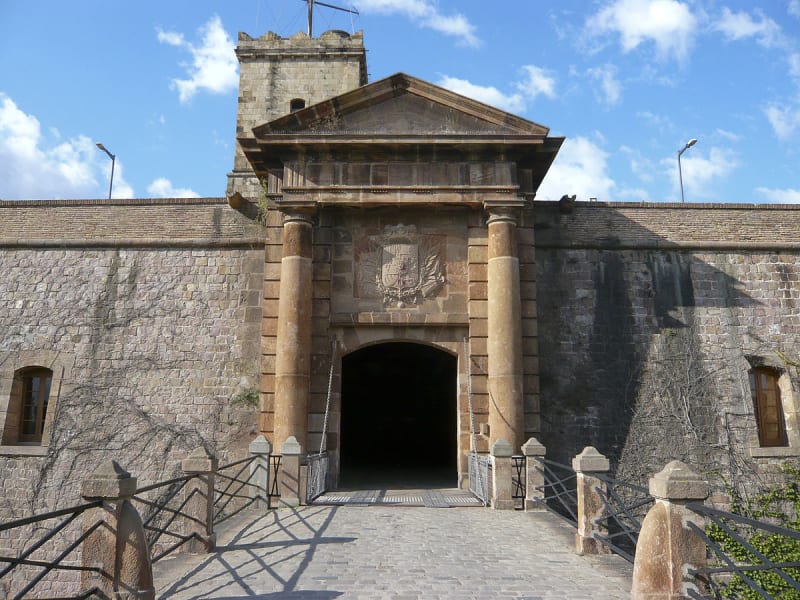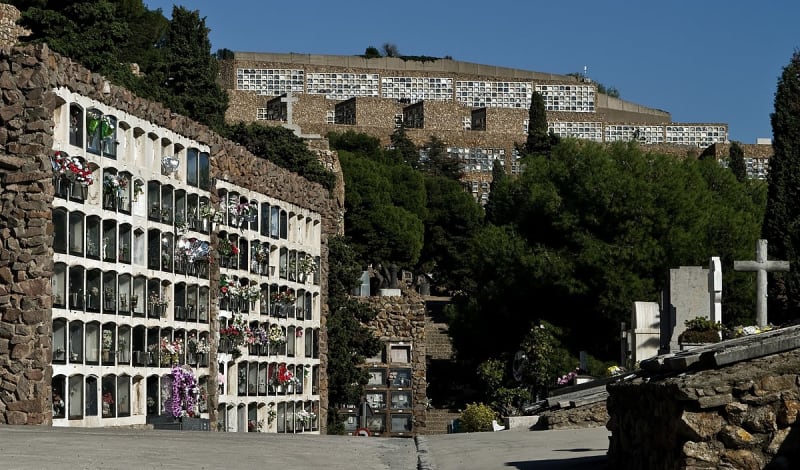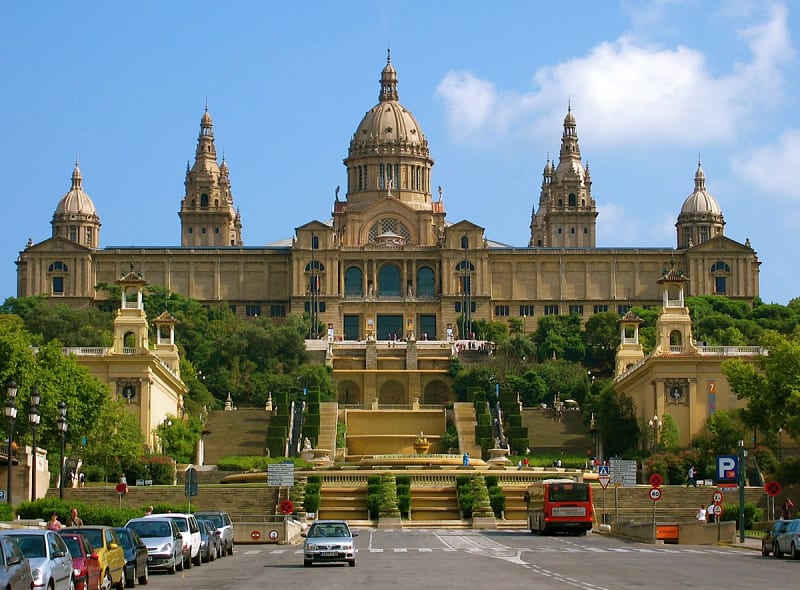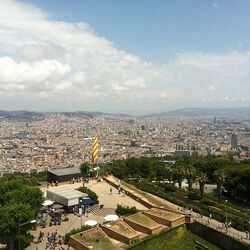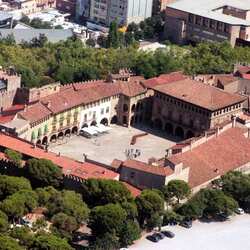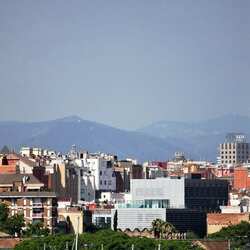Montjuic
Montjuic Mountain towers over Barcelona harbor almost in the center of the city. The hill is not too high - its height is 173 m, it contains hundreds of historical and modern structures that are of interest not only to locals, but also to travelers from all over the world. From the harbor side, Montjuic is a steep cliff. Its flat top is easily accessible by funicular, one of the two cable cars, by bus, or on foot.
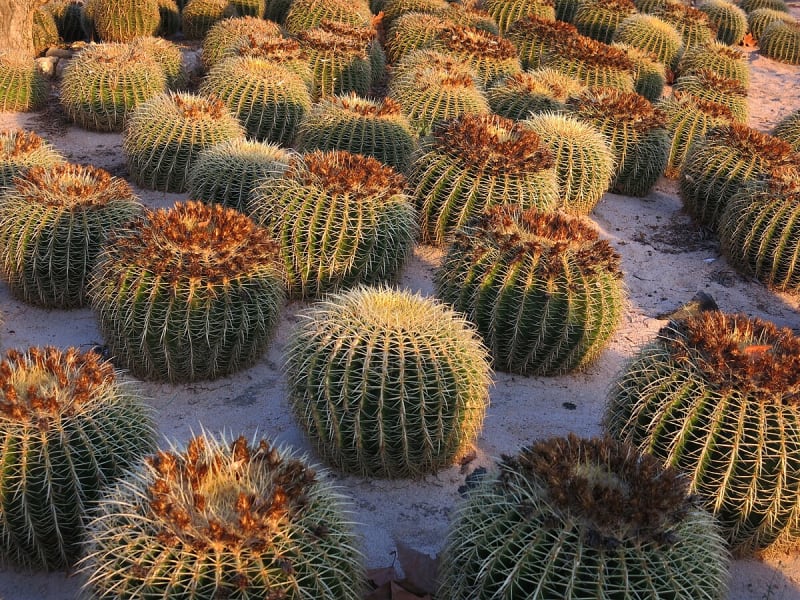
Castle
Montjuic Castle crowns the hill. From its height there is a picturesque view of the city and the sea below. The fortress castle was built in the 17th century. The fortress played a huge defensive role, nature itself made it impregnable to enemies. In the 18th century, the castle was rebuilt according to the design of architect H. M. Kermeno.
For a long time, there was a prison in the castle, which was notorious among the locals as a place of execution for many prisoners. Now only the thick walls, picturesquely entwined with vines and ivy, remind of this. A military museum has been opened on the territory of the fortress, where weapons from medieval to modern, documents, knight's armor and much more are presented.
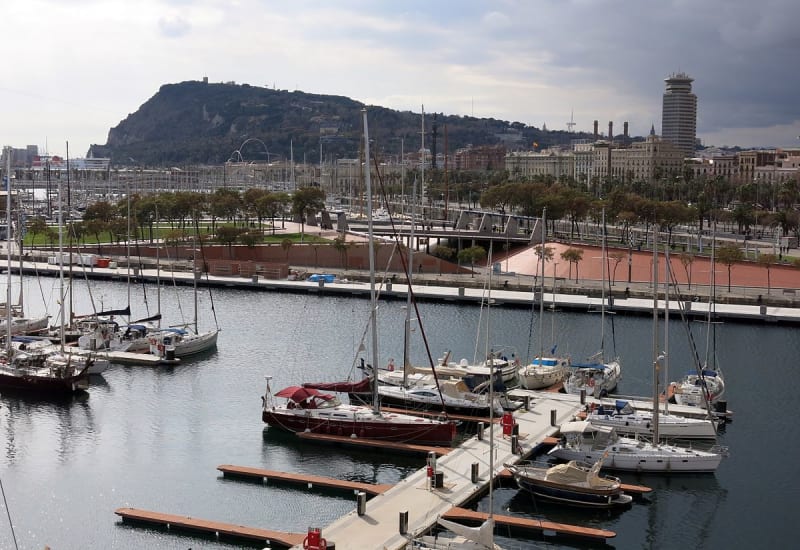
Films are shown on warm summer nights at the Sala Montjuic open-air cinema near the castle. The origin of the hill's name, as the Barcelonans prefer to call the mountain, has two versions: The Jewish Mountain - an old Jewish cemetery was located on one of the slopes, or Mount Jupiter.
Montjuic Gardens
There are several beautiful gardens on the hill. At the beginning of the 20th century, great work was done on landscaping and beautification of the landscape. It was then that parks and gardens with unique Mediterranean fauna, pergolas, original gazebos and outdoor terraces, fountains appeared.
Later, the nursery, located on the north-western slope, was transformed into a Botanical Garden with a magnificent collection of rare and exotic plants. There is also the Mirador del Alcalde, the best observation deck equipped with an original fountain.
In the 70s of the last century, the Mossen Costa and Llobera gardens with exotic cacti appeared. In the Mossen Cinto Verdager gardens, you can admire aquatic and other unique plants.
Sports facilities
In 1992, the Olympic Games were held in Barcelona. By their beginning, a huge stadium, swimming pools, a football field, a tennis court and other sports facilities had been built on the hill. All of them are united in the Olympic Ring, the pearl of which is the Palau Sant Jordi, an indoor sports arena. After the Olympics, the new sports palace was converted into a musical theater, where performances and shows are successfully held.
A little bit about the exhibition of 1929
The royal Albenice Palace is built on the slope, around which lies the Joan Maragall Garden. The royal family was in the palace during the International Exhibition in 1929. Spain Square, many pavilions and other structures were built for the opening. The exhibition halls are used for other expositions of European and global scale.
A magnificent musical fountain was built at the foot of Montjuic Hill in 1929, which was restored for the start of the Olympics. The magical dance of water is accompanied by lyrical music and spectacularly iridescent light - it is impossible to take your eyes off the fascinating sight. The height of the fountain jet rises to a height of 54 meters.
Museums and attractions
The Museum of Art, located in the National Palace, exhibits medieval frescoes, altars, and unique sculptures. There are masterpieces by Rubens, Goya, El Greco, and Picasso. The Numismatics Department has an excellent coin collection.
Of particular interest is the J. Miro Museum, which introduces visitors to contemporary art. Among the paintings and original compositions is the Mercury Fountain, an unusual work in which mercury flows instead of water. The artist's works are ambiguous, but many of them adorn the expensive interiors of the world's millionaires and billionaires.
The Spanish village, which occupies 49,000 square meters, houses 117 buildings that recreate the look of a typical Catalan town. In front of the eyes of visitors, craftsmen create their works in numerous craft shops. Here you can taste traditional Spanish cuisine. The village was built by the beginning of the exhibition in 1929. According to the plan of architect Cadafalco, every visitor to the village got a complete picture of the culture, life and crafts of different regions of Spain.
Torre Calatrava is truly admired and surprised. A high-tech TV tower, rising high into the sky (136 m). Someone compares it to the tail of a whale, and someone to the Olympic torch. The tower was designed by the extraordinary architect Santiago Calatrava.
You can spend more than one day on Montjuic, and even this time is not enough to get to know the sights of the legendary hill, known all over the world.
